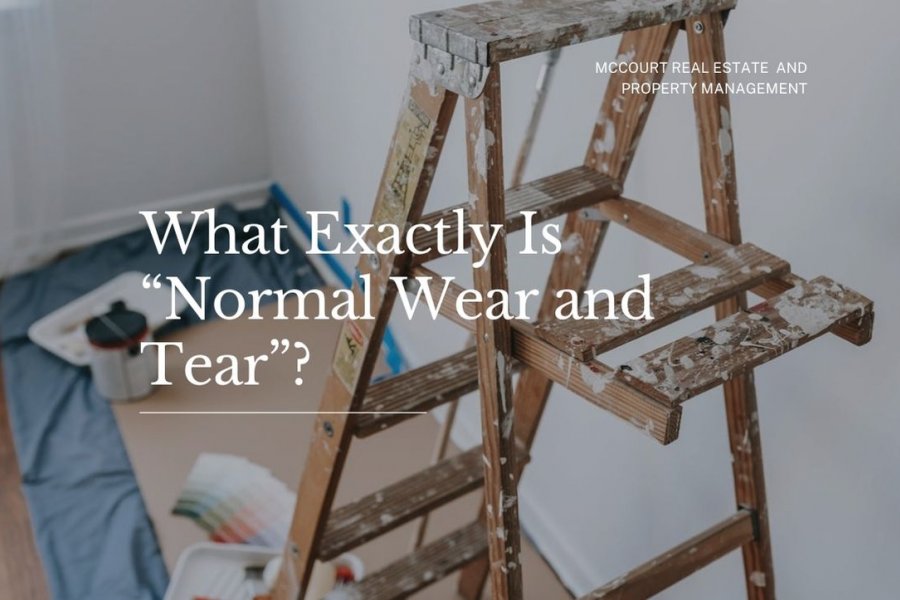
Ever wondered what truly qualifies as "normal wear and tear" in your rental property? As a landlord, it’s crucial to understand this distinction, yet it often becomes a gray area when it comes to handling security deposits or assessing damages. While some residents may argue that their property's condition is simply due to regular use, others might see it as neglect.
Understanding what falls under normal wear and tear versus damage caused by misuse can save you from unnecessary disputes and costly repairs. In this article, we’ll break down exactly what "normal wear and tear" is, how to handle it, and why it's crucial for protecting both your property and your investment.
Defining Normal Wear and Tear
"Normal wear and tear" refers to a property's natural, expected decline over time due to everyday use. This could include things like scuffed floors, faded curtains, or light scratches on the walls.
These are the results of ordinary living and aren’t caused by neglect or misuse. As a landlord, it’s essential to understand that while normal wear and tear happens, it doesn’t mean the property is being abused. It’s just the natural process of aging over time.
Examples of Normal Wear and Tear
Here are a few common examples that most landlords would agree qualify as normal wear and tear:
- Worn Carpet or Flooring: Over time, carpet fibers can become flattened or discolored from regular foot traffic, even with proper cleaning.
- Fading Paint or Wallpaper: Exposure to sunlight, heat, and general use causes paint to fade or peel slowly. This is inevitable and doesn’t indicate negligence.
- Minor Wall Scuffs: A few minor scuffs from furniture or light contact with walls is expected and shouldn’t be considered damage.
- Plumbing Wear: Small drips or slight loosening of faucets that come with regular use are part of normal wear. These are all things that any resident may cause unintentionally over their stay, and they are not usually grounds for withholding a full security deposit.

What Isn’t Considered Normal Wear and Tear?
While normal wear and tear is expected, certain things are clearly outside this category. Damage caused by neglect, accidents, or misuse falls on the resident’s responsibility. Some examples include:
- Stained Carpets: While slight wear and tear on carpets is normal, large stains from spills, pets, or other accidents aren't.
- Broken Appliances or Fixtures: If appliances are damaged beyond normal use, such as a cracked fridge door or a microwave that is no longer working due to mishandling, this is not considered wear and tear.
- Significant Wall Damage: Large holes, deep scratches, or marks caused by improper use (e.g., hanging heavy items without the proper hooks) fall outside normal wear.
- Pet Damage: Scratched floors or chewed furniture caused by pets isn’t considered normal wear and tear and should be repaired at the resident’s expense.
The Importance of Documentation
Documentation is one of the most effective ways to protect yourself as a landlord. By recording the condition of your property at both the move-in and move-out stages, you create a clear, unbiased record of what is considered normal wear and tear versus potential damage.
This process can help you avoid disputes when it’s time to return the security deposit. Key steps include:
- Move-In Inspection: Take photos and write down the property's condition, noting any existing damage or wear.
- Move-Out Inspection: Do the same when the resident leaves to compare the property’s condition at the start and end of their stay.
- Written Reports: Keep a detailed report of what was observed during inspections and share it with the residents for transparency.

How to Handle Normal Wear and Tear vs. Damage
When it comes time to assess damages or wear, here’s how you can handle the situation:
- Assess Fairly: For minor wear, such as faded, worn out paint or worn flooring, it’s best to absorb the cost as part of maintaining your property. This is normal and expected.
- Charge for Damage: If you find damage that goes beyond normal wear, such as broken fixtures or large stains, you have the right to charge the resident for repairs and renovations. Keep detailed records of the costs involved.
- Communication Is Key: Be sure to communicate clearly with your residents about what is considered normal wear and tear and what is their responsibility. A clear understanding can prevent misunderstandings later on.
The Role of Security Deposits in Wear and Tear
Security deposits serve as protection for landlords, helping to cover repairs for damages that go beyond normal wear and tear. It’s important to know how and when you can use this deposit:
- Normal Wear and Tear: You should not deduct anything for wear and tear from the security deposit. This is considered part of regular property upkeep.
- Excessive Damage: If damage occurs that exceeds what’s expected, you can use the deposit to cover the repair costs.
- State Laws: Be aware of the laws in your state regarding how much you can charge for damages and how you must return the deposit to residents. Usually, this must be done within a specified period after they move out.

Preventing Excessive Wear and Tear
While some wear is inevitable, there are steps you can take to minimize it and keep your property in good condition for longer:
- Regular Maintenance: Regular checks of appliances, plumbing, and other features can prevent larger issues from developing. For example, changing air filters or servicing HVAC units can prevent damage from neglect.
- Clear Expectations: Set clear guidelines for residents about how to care for your property. This can include instructions on maintaining appliances, handling trash, or using appropriate cleaning methods.
- High-Quality Materials: Investing in durable materials like tougher flooring or stain-resistant paint can help reduce the impact of normal use over time. By staying proactive and keeping up with maintenance, you’ll minimize the amount of wear and tear, ultimately protecting your investment.
The Bottom Line
Understanding "normal wear and tear" is essential for maintaining your property’s value and avoiding unnecessary disputes. McCourt Real Estate & Property Management offers expert guidance to help you navigate these gray areas, ensuring your investment stays protected.
Remember, charging a resident’s security deposit for “Normal Wear & Tear” items is the best way to be taken to court as a landlord. If a landlord wrongfully withholds any part of the security deposit, or charges for normal wear and tear, the tenant has the right to take legal action. In such cases, a judge can award triple the amount of the security deposit if it’s determined that the landlord mishandled the situation.
Thorough documentation, clear communication with tenants, and following legal guidelines when managing security deposits are important. Avoiding unfair charges can help landlords protect themselves from costly lawsuits.
Whether assessing damage or handling move-out inspections, our team can provide tailored solutions. Contact us today to discuss how we can assist you in managing your property efficiently and protecting your bottom line!